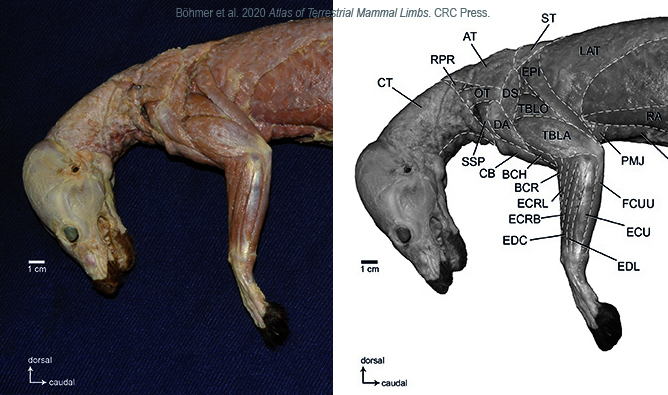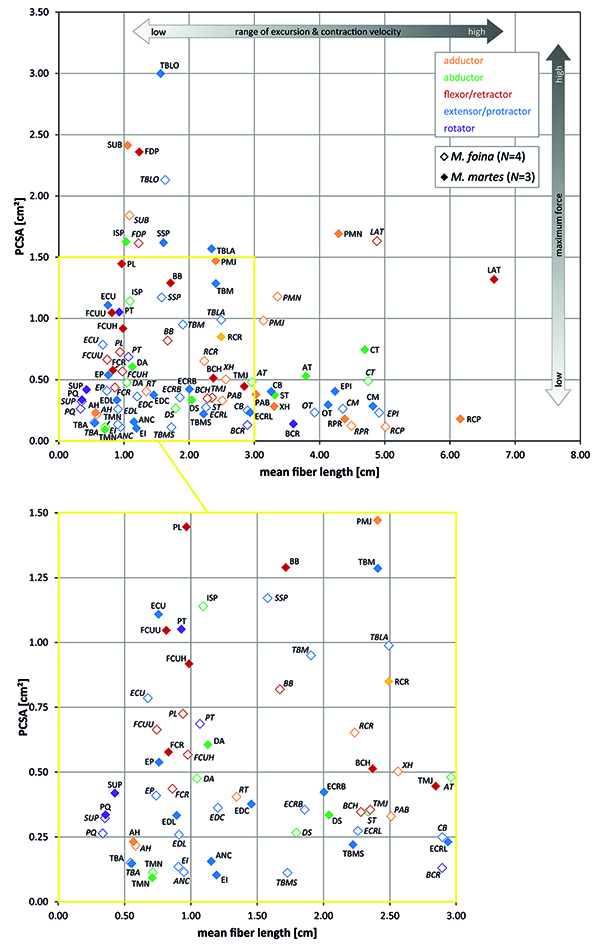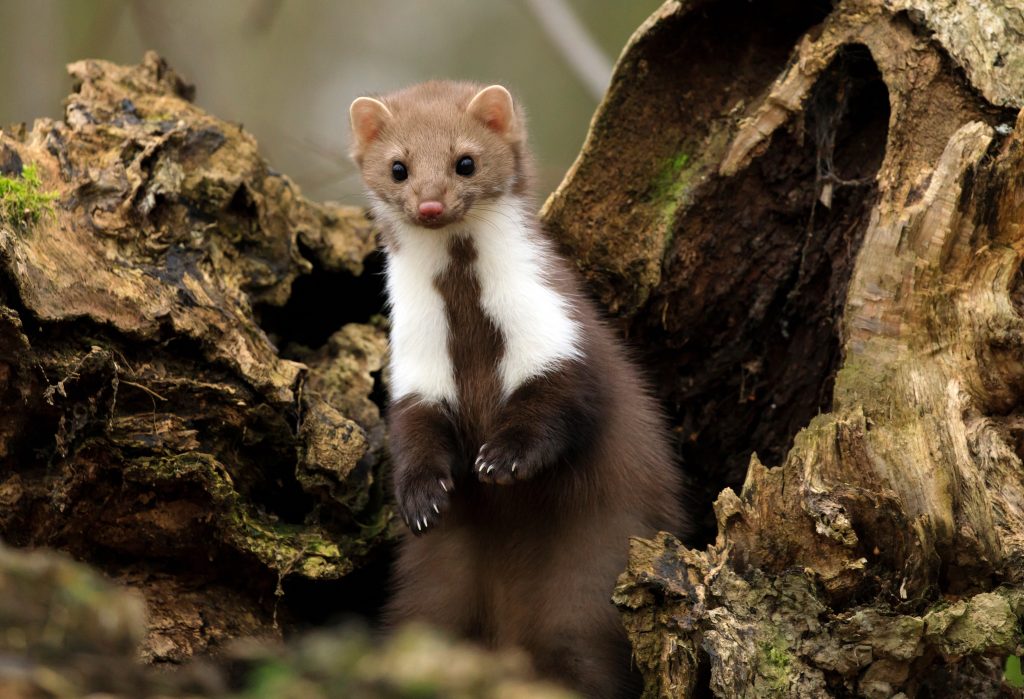Atlas of Terrestrial Mammal Limbs –
Carnivora
The
arboreal pine marten (
Martes martes) and the
more terrestrial stone marten (
Martes foina) are the most similar sympatric carnivores in Europe, but distinctly differ in habitat selection and locomotor mode. The pine marten lives primarily in forest environments (coniferous, deciduous or mixed forests) avoiding urban areas and arable lands (Larivière & Jennings 2009). In contrast, the stone marten is among the few mustelids that take advantage of urban areas and increased availability of food resources in urban areas (Wereszczuk & Zalewski 2015).
Quantitative dissections of the forelimbs of the two closely related species of Mustelidae revealed differences in muscle anatomy that relate to the different locomotor habits (Böhmer et al. 2018). The force-generating capacity of the limb flexor and retractor muscles and the excursion capability of the adductor muscles are greater in the pine marten compared to the stone marten. These differences are interpreted to reflect the greater climbing ability of the pine marten.

Superficial forelimb anatomy of Martes foina (European stone marten).
High PCSA values in combination with short fibers suggest a high maximum force, but low range of excursion and contraction velocity. Low PCSA values in combination with long fibers suggest a low maximum force, but high range of excursion and contraction velocity. High PCSA values in combination with long fibers characterize metabolic costly muscles.

Function space plot (fiber length vs. PCSA) for muscles of the shoulder and forelimb in Martes foina and Martes martes. From Böhmer et al. 2018 The Anatomical Record (DOI: 10.1002/ar.23742).
Böhmer C, Fabre A-C, Theil J-C, Herrel A. 2020. Atlas of terrestrial mammal limbs. CRC Press. 384 pages. ISBN 9781138705906. DOI: https://doi.org/10.1201/b22115.
Böhmer C, Fabre A-C, Herbin M, Cornette R, Peigné S, Herrel A. 2018. Anatomical basis of differences in locomotor behavior in martens: a comparison of the forelimb musculature between two sympatric species of Martes. The Anatomical Record 301 (3): 449-472. Special issue on functional morphology. DOI: 10.1002/ar.23742.
Larivière S, Jennings AP. 2009. Family Mustelidae (Weasels and relatives). In: Wilson DE, Mittermeier RA, editors. Handbook of the Mammals of the World. Vol 1. Carnivores. Barcelona: Lynx Edicions. p 564–656.
Wereszczuk A, Zalewski A. 2015. Spatial niche segregation fo sympatric stone marten and pine marten – Avoidance of competition or selection of optimal habitat? PloS One 10:e0139852.




Neueste Kommentare